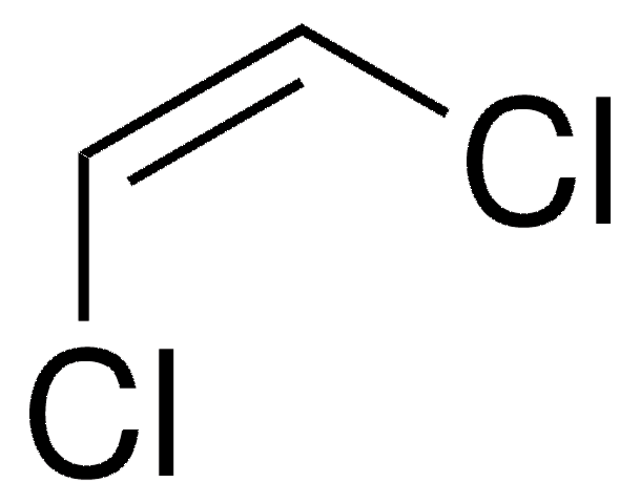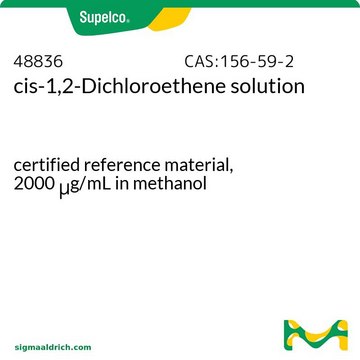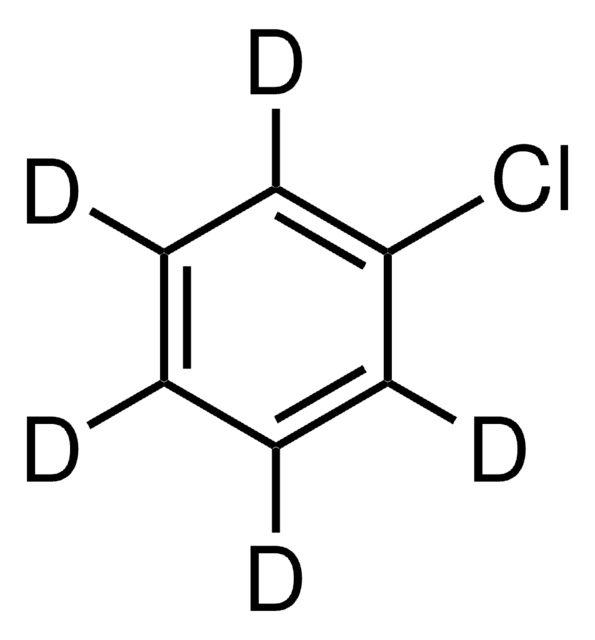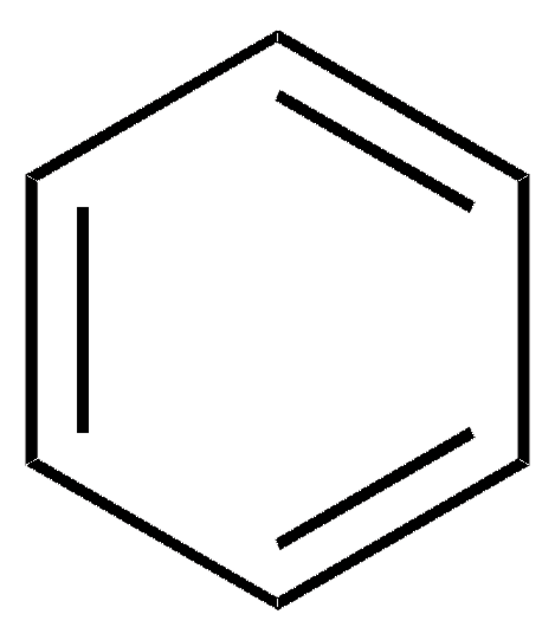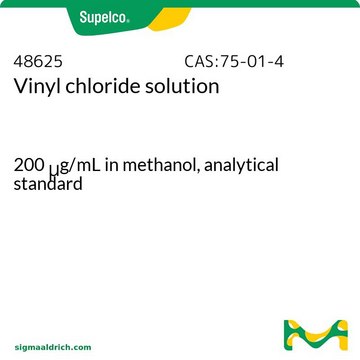Wichtige Dokumente
48597
cis-1,2-Dichlorethen
analytical standard
Synonym(e):
cis-1,2-Dichlorethylen, cis-Acetylendichlorid
About This Item
Empfohlene Produkte
Qualität
analytical standard
Analysenzertifikat (CofA)
current certificate can be downloaded
Verpackung
ampule of 1000 mg
Methode(n)
HPLC: suitable
gas chromatography (GC): suitable
Brechungsindex
n20/D 1.449 (lit.)
bp
60 °C (lit.)
mp (Schmelzpunkt)
−80 °C (lit.)
Dichte
1.284 g/mL at 25 °C (lit.)
Anwendung(en)
environmental
Format
neat
Lagertemp.
2-8°C
SMILES String
Cl\C=C/Cl
InChI
1S/C2H2Cl2/c3-1-2-4/h1-2H/b2-1-
InChIKey
KFUSEUYYWQURPO-UPHRSURJSA-N
Suchen Sie nach ähnlichen Produkten? Aufrufen Leitfaden zum Produktvergleich
Anwendung
Empfehlung
Signalwort
Danger
H-Sätze
Gefahreneinstufungen
Acute Tox. 4 Inhalation - Acute Tox. 4 Oral - Aquatic Chronic 3 - Flam. Liq. 2 - Skin Irrit. 2
Lagerklassenschlüssel
3 - Flammable liquids
WGK
WGK 2
Flammpunkt (°F)
42.8 °F - closed cup
Flammpunkt (°C)
6.0 °C - closed cup
Persönliche Schutzausrüstung
Eyeshields, Faceshields, Gloves
Hier finden Sie alle aktuellen Versionen:
Besitzen Sie dieses Produkt bereits?
In der Dokumentenbibliothek finden Sie die Dokumentation zu den Produkten, die Sie kürzlich erworben haben.
Kunden haben sich ebenfalls angesehen
Protokolle
US EPA Method TO-17: GC Analysis of Volatiles on VOCOL® after Collection/Desorption using Air Toxics Tube
Unser Team von Wissenschaftlern verfügt über Erfahrung in allen Forschungsbereichen einschließlich Life Science, Materialwissenschaften, chemischer Synthese, Chromatographie, Analytik und vielen mehr..
Setzen Sie sich mit dem technischen Dienst in Verbindung.